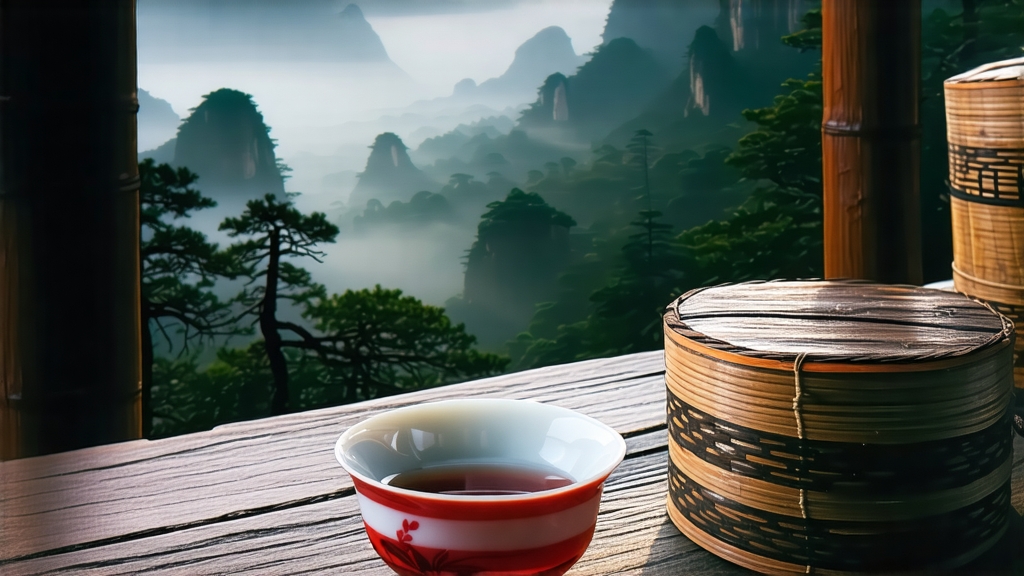
Long before Assam, Ceylon or Keemun ever entered a Western cup, the first fully oxidised leaf that Europe would label “black tea” was carried out of the Wuyi Mountains on mule-back, its aroma still clinging to the cold night air like incense. That leaf was Lapsang Souchong, a name that still makes seasoned tasters close their eyes and picture resinous smoke drifting across a fir-dark valley. To understand Chinese red tea—hong cha, as it is known at home—one must begin here, in the granite gorges of northern Fujian, where the myth of black tea was lit by a pine-wood fire.
History: from army deserters to London drawing-rooms
Local lore fixes the birth-year at 1646, when Qing troops forced tea workers to flee Tongmu Village. In their haste the farmers dumped freshly picked leaves into heaps; by the time they returned the jade-green buds had turned copper-red. Rather than waste the crop they dried the leaf over the nearest fuel—pine roots—then rushed it to the river port of Xingcun. Dutch traders recognised its keeping qualities on the long sea voyage and shipped it to Java, then Amsterdam. Within two decades the British East India Company had rebranded it “Bohea Souchong,” auctioning it alongside silks and spices. Samuel Pepys drank it; Queen Victoria reportedly mixed it with whisky; and by the 1850s Lapsang had become the benchmark against which all other black teas were measured, a position it held until faster-rolling, unsmoked varieties from India stole the limelight.
Terroir: why only Tongmu can be “original”
The Min River cuts a sheer canyon through 650-million-year-old rhyolite, creating a micro-climate of warm days, fog-cooled nights and humidity that lingers at 85 %. At 1 200 m the bushes grow slowly, building the amino acids that later translate into malt sweetness. Crucially, the village is ringed by Masson pine (Pinus massoniana) and Chinese red pine (P. tabuliformis); their resin contains α-pinene and longifolene, the same terpenes that give rosemary and frankincense their pungency. EU regulations now restrict the use of the name “Tongmu Lapsang Souchong” to leaf picked inside a 565-hectare core zone; anything else must be labelled “smoked black tea,” a legal echo of Champagne or Parma ham.
Cultivars: three bushes, three voices
- Cai Cha (“vegetable tea”), the heirloom small-leaf landrace, delivers the lightest, most elegant cup with hints of dried longan.
- Zhenghe Da Bai, a large-leaf cultivar transplanted from neighbouring Zhenghe county, yields a thicker liquor that can stand up to heavier smoking.
- Jinmudan (“golden peony”), a modern Wuyi rock-tea hybrid, adds orchid fragrance to the traditional pine profile, bridging oolong and black styles.
Farmers usually plant these in mixed blocks, harvesting each at its optimal window so that the final blend carries layered aromatics rather than a single shout of smoke.
Craft: the four firings that write the score
Plucking begins at Qingming, when the standard is one bud plus two leaves, 45 % open. The leaf is withered on bamboo screens set over shallow trenches where pine embers smoulder at 40 °C; the smoke is not allowed to touch the leaf directly, only its scented air. Once the leaf has lost 60 % moisture it is rolled for 45 minutes in a cast-iron trough whose ribs mimic the traditional foot-press, breaking cells and releasing catechins. Oxidation follows in cedar-lined boxes kept at 26 °C and 80 % humidity; here chlorophyll degrades into pheophytin, turning the leaf a dark gunmetal. The critical stage is the final hot-air drying: baskets of tea are placed on multi-tiered pinewood racks while a pine-root fire burns beneath for six hours, during which the leaf’s moisture drops to 4 % and the surface becomes lacquered with resinous oils. Master smokers judge readiness by sound: when the rustle reaches the pitch of autumn chestnuts they know the tea will keep its fragrance for decades.
Grades